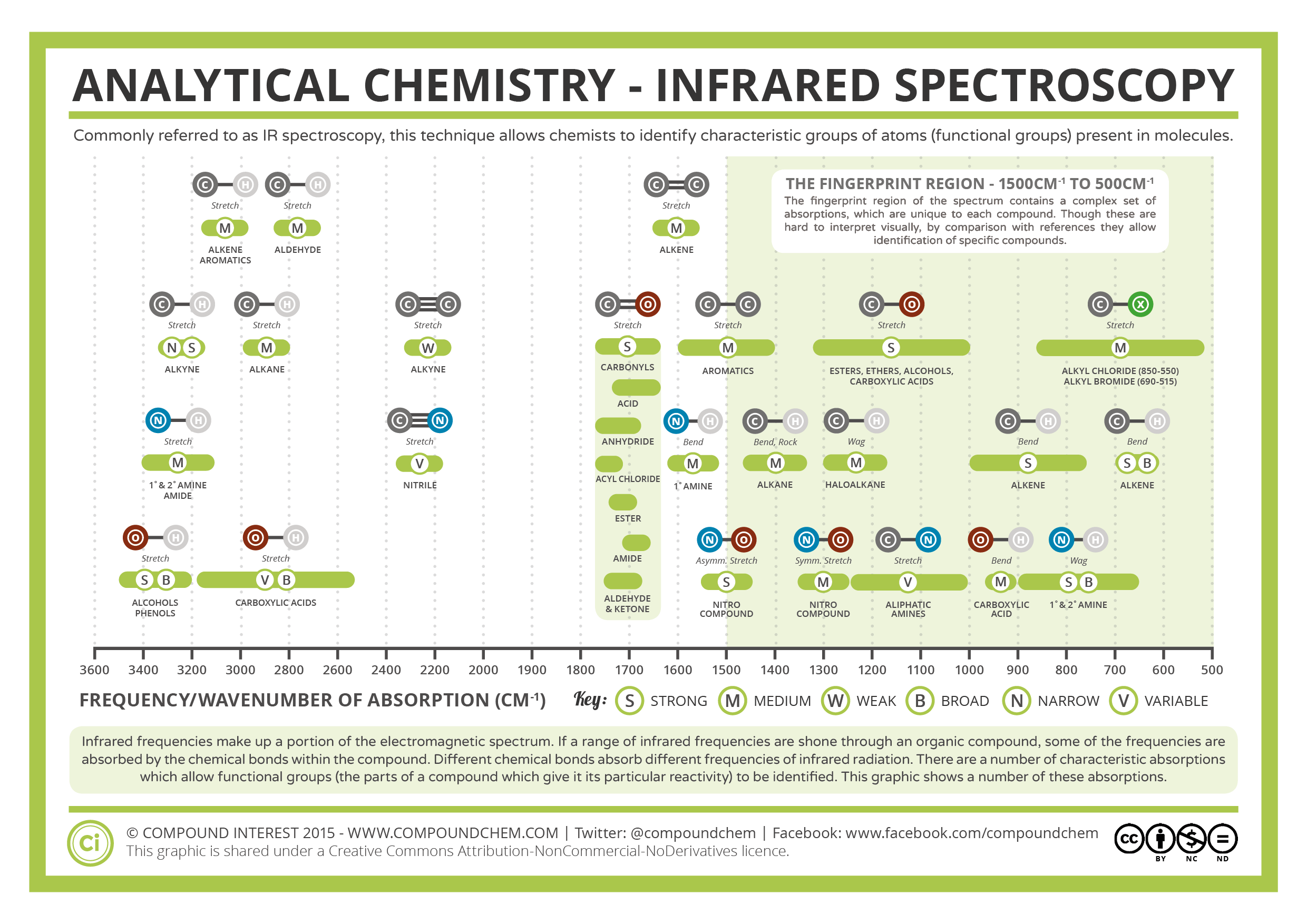Infrared spectroscopy involves the interaction of infrared radiation with matter. It covers a range of techniques, mostly based on absorption spectroscopy. CachadLiknandeÖversätt den här sidanInfrared Spectroscopy.
Introduction As noted in a previous chapter, the light our eyes see is but a small part of a broad spectrum of electromagnetic radiation. Infrared Spectroscopy is the analysis of infrared light interacting with a molecule. This can be analyzed in three ways by measuring absorption, . The category of EM radiation is termed infrared (IR) radiation, and its application to organic chemistry known as IR spectroscopy. An explanation of how an infra-red spectrum arises.
A simple explanation of how an infra-red spectrum is formed. The term infra red covers the range of the electromagnetic spectrum between 0. In the context of infra red spectroscopy, wavelength is . To help understand IR, it is useful to compare a vibrating bond to the physical model of a vibrating spring system. RSC also offers a video introducing IR spectroscopy.
Infrared (IR) Spectroscopy uses a beam of infrared light to analyze the structure of organic . Most of us are quite familiar with infrared radiation. We have seen infrared lamps keep food hot and often associate infrared radiation with .

Spectroscopy is the study of the interaction of electromagnetic radiation with matter. Photons in the infrared region of the spectrum have much less energy than . IR Absorption Frequencies of Functional Groups Containing a Carbonyl (C=O). Nakanishi, Koji Infrared Absorption Spectroscopy. I’ve been covering infrared spectroscopy recently with one of my A level classes, and realised that I haven’t really come across an aesthetically . Infrared spectroscopy deals with the interaction of infrared light with matter.
The energy of an infrared photon can be calculated using the Planck energy relation. Transmission IR Spectroscopy : employing the same basic experimental geometry as that used for liquid samples and mulls. Introduction to technique (p.
833-8in lab textbook). Infra-red spectroscopy is one type of absorption spectroscopy which is useful to organic chemists – Infra-red radiation has the right energy content (E = hu) to .